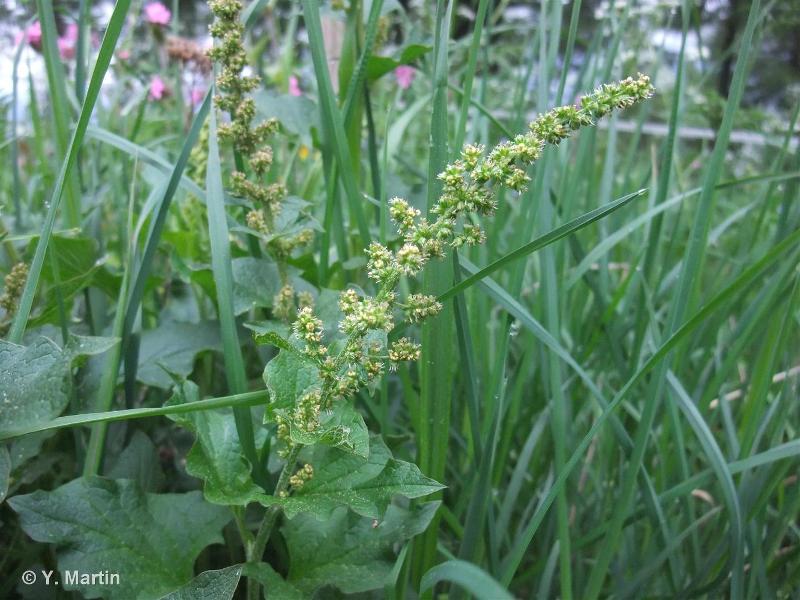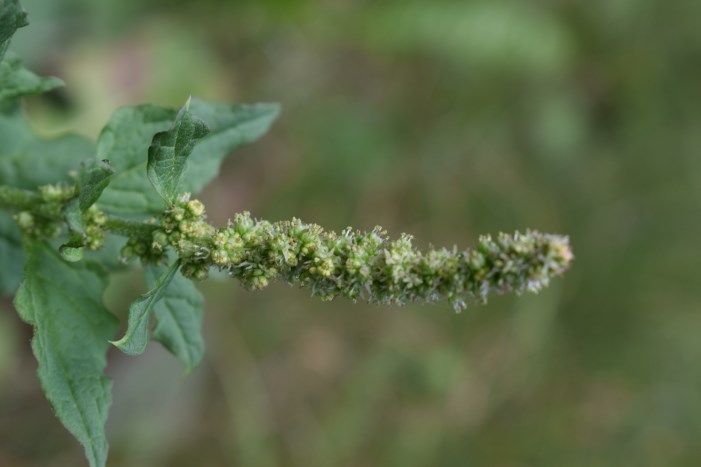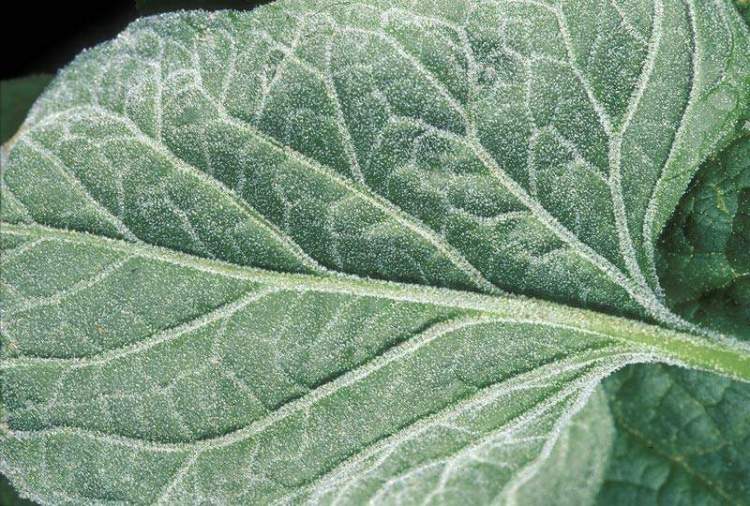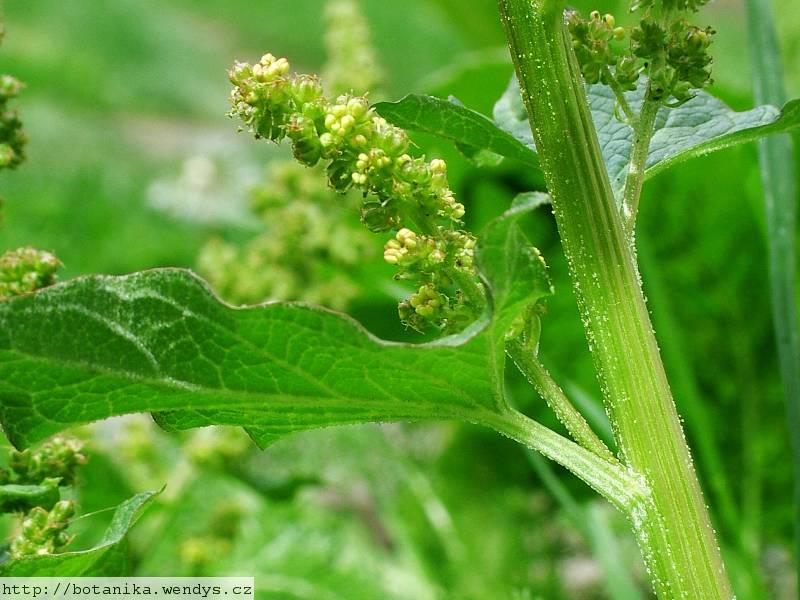Goosefoot | plant | Britannica

Chenopodium bonus-henricus L. Higher Taxa: Taxonomy Browser Concept: Andean Bryophytes Bolivia Checklist Catalogue of New World Grasses Ecuador Catalogue Flora Mesoamericana Madagascar Catalogue Moss Flora of China Peru Checklist System details
Chenopodiaceæ, The Goose-Foot Tribe - Illustrations of the

Good King Henry, or mercury goosefoot (Blitum bonus-henricus, formerly C. bonus-henricus), is a deep-rooted perennial with several stems and edible spinach -like leaves. Feather geranium, or Jerusalem oak goosefoot (Dysphania botrys, formerly C. botrys), has many clusters of small flowers and is occasionally cultivated in gardens.
Ecdysteroids in Spinacia oleracea and Chenopodium bonus
c. bonus-henricus
The roots of Chenopodium bonus-henricus and the seeds of Spinacia oleracea contain 20-hydroxyecdysone and polypodine B. The seeds of S. oleracea also contain a compound with properties similar to
"Rates And Modes Of Sequence Evolution In Various Lineages
c. bonus-henricus
Blitum bonus-henricus (Linnaeus) C.A. Meyer Dataset GBIF Backbone Taxonomy Rank SPECIES Classification kingdom Plantae phylum Tracheophyta class Magnoliopsida
Blitum - Wikipedia

Begonia bonus-henricus is a species of plant in the Begoniaceae family. It is endemic to Cameroon. Its natural habitat is subtropical or tropical moist lowland forests. It is threatened by habitat loss.
7 incredible Quinoa nutrition facts and health benefits

Blitum bonus-henricus. Published online. Accessed Feb. 24 2016. The Plant List 2013. Blitum bonus-henricus in The Plant List Version 1.1. Published on the internet. Accessed: 2016 Feb. 24. Tropicos.org 2019. Blitum bonus-henricus. Missouri Botanical Garden. Published on the internet. Accessed: 2019 May 12. USDA, ARS, Germplasm Resources
Good-King-Henry | plant | Britannica.com
c. bonus-henricus
Chenopodium, from the Greek for goose-foot, is a genus very frequent in Europe, usually on waste ground, or on heaps of rubbish, where C. bonus Henricus (1) is to be found. This species was formerly cultivated in gardens, and eaten as a vegetable; the mucilaginous leaves are still, in country places, thought good for healing slight wounds.
Chenopodiaceæ, The Goose-Foot Tribe - Illustrations of the

Chenopodium, from the Greek for goose-foot, is a genus very frequent in Europe, usually on waste ground, or on heaps of rubbish, where C. bonus Henricus (1) is to be found. This species was formerly cultivated in gardens, and eaten as a vegetable; the mucilaginous leaves are still, in country places, thought good for healing slight wounds.
Blitum bonus-henricus - Wikispecies
c. bonus-henricus
Good King Henry, or mercury goosefoot (Blitum bonus-henricus, formerly C. bonus-henricus), is a deep-rooted perennial with several stems and edible spinach -like leaves. Feather geranium, or Jerusalem oak goosefoot (Dysphania botrys, formerly C. botrys), has many clusters of small flowers and is occasionally cultivated in gardens.
Triterpene saponins from Chenopodium bonus-henricus roots

All of these other gene analyses consistently give Spinacia as sister to a clade that includes C. bonus-henricus, C. foliosum, and M. nuttalliana, recently recognized as the genus Blitum.
Blitum bonus-henricus (Linnaeus) C.A. Meyer

Good King Henry (Chenopodium bonus-henricus), packet of 50 seeds, organic $ 2.45. Family: Goosefoot (Chenopodiaceae) Hardy to Zone 6 (Early Spinach, Poor-man’s Asparagus, Perennial Goosefoot, Lincolnshire Spinach, Markery)Low-clumping perennial native to central Europe. A traditional vegetable of the cottage garden, the leaves and young
Chenopodium - Michigan Flora
c. bonus-henricus
In addition, it was also used for treating swollen legs and feet, as well. An ointment made from the leaves was smeared on chronic sores. In Italy C. bonus-henricus is also used for its antianemic and expectorant properties and it was applied topically on skin inflammations caused by stinging nettle , , , . In Bulgarian folk medicine the roots are known as “chuven” and have been applied externally to treat …
Begonia bonus-henricus - Wikipedia

Good King Henry, or mercury goosefoot (Blitum bonus-henricus, formerly C. bonus-henricus), is a deep-rooted perennial with several stems and edible spinach-like leaves. Feather geranium, or Jerusalem oak goosefoot (Dysphania botrys, formerly C. botrys), has many clusters of small flowers and is occasionally cultivated in gardens.
Chenopodium bonus-henricus L. – A source of

Chenopodium bonus-henricus L. is an accepted name This name is the accepted name of a species in the genus Chenopodium (family Amaranthaceae ). The record derives from WCSP (in review) (data supplied on 2012-03-23 ) which reports it as an accepted name with original publication details: Sp. Pl. 218 1753 .